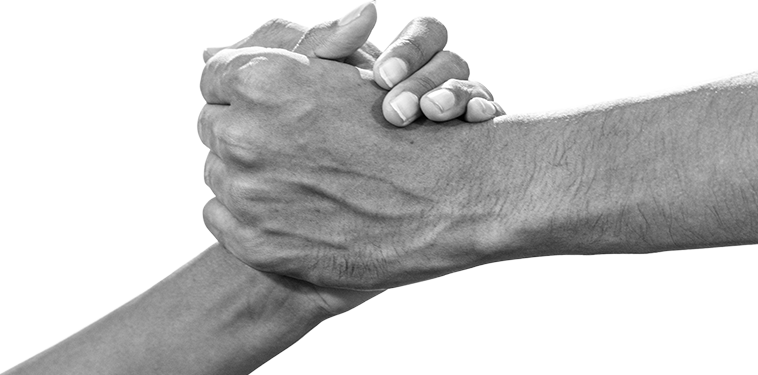Mental Health in the Digital Age: Finding a Balance

Written by: Sabeeha Azmi
Photo by Freepik
As the usage of digital technology has rapidly increased in the last few decades, the intersection of mental health and technology has gathered significant attention. With the extensive use of smartphones, social media platforms, and other digital communication tools, the mental health landscape has substantially changed. While the introduction of technological advancements to our lives has brought convenience and connectivity, it has also brought new challenges and risks to our mental well-being.
A large and significant development in the digital age is the rise and usage of social media. Several platforms like Instagram, TikTok, and Facebook have revolutionised the way we consume, connect and share information. Although this consumption has allowed for global connectivity, the high usage is also linked to various mental health issues and consequences. Research has shown that using social media excessively can lead to increased rates of loneliness, depression, anxiety, and low self-esteem, especially among young adults and adolescents (Twenge & Campbell, 2018).
As our social media is often curated towards us, it often presents idealised versions of our lives, which can lead to us making unhealthy comparisons and developing a distorted sense of reality. This phenomenon, also known as “social comparison”, can further exacerbate feelings of anxiety and inadequacy (Vogel et al., 2014). Furthermore, we are constantly exposed to negative news and may even experience cyberbullying on social media, which research shows can be associated with experiencing heightened stress and depressive symptoms (Keles et al., 2020).
Despite these challenges to our mental health, digital technology has also opened up new areas for mental health care. E-therapy, or teletherapy, has become an increasingly popular option for individuals to seek help and support. The increase in the use of teletherapy was seen during the COVID-19 pandemic and the platform has continued to be in use after. Online therapy sessions allow us to access mental health professionals and help more easily and remove barriers to seeking support like geographical distance, lack of transportation, affordability, and time constraints (Jenkins-Guarnieri et al., 2015). These factors, along with the anonymity offered by e-therapy, make it a great option for individuals who otherwise might avoid seeking help.
Although advancements in technology have allowed for the development and access to wide-ranging mental health resources, they also come with several risks. We might experience “techno-stress”, which refers to stress caused by digital overload and constant presence and connectivity to technology (Brooks et al., 2020). Having access to digital communication 24/7 can result in the boundaries between work and personal life being blurred, leaving individuals feeling burnout and experiencing an overall decrease in their mental well-being.
In addition, there has also been a rise in the concept of “doom-scrolling”, where individuals compulsively consume a lot of content and negative news online. This can lead to individuals engaging in a cycle of despair, worry, and anxiety, which can lead to increases in mental health issues (Meier et al., 2020). Excessive usage of digital devices before sleep has been linked to disturbances in sleep and reduced quality of sleep, which can go on to affect a person’s overall quality of life and mental health (Exelmans & Van den Bulck, 2016).
Therefore, as we continue to navigate the ever-evolving digital landscape of today, we must strike a balance between our usage of technology for connectivity and mental health benefits and mitigating the potential risks and harm that we might experience. This can involve encouraging and developing healthy online behaviours, having time boundaries on social media usage, increasing our digital literacy, and creating a culture of mindfulness and self-care as we use our technologies. Mental health professionals, policymakers, and community well-being organisations can work together to develop workshops, awareness, strategies, etc., that can address the unique and diverse challenges and experiences within the digital landscape. By understanding and addressing these challenges, we can learn to navigate the digital age better and promote mental well-being in our ever-changing technological world.
References
Brooks, S., Dunn, R., Sage, D., Amlôt, R., Greenberg, N., & Rubin, G. J. (2020). Risk and resilience factors affecting the psychological wellbeing of individuals in the digital age: A narrative review. Journal of Public Health, 42(3), 451-460. https://doi.org/10.1093/pubmed/fdz106
Exelmans, L., & Van den Bulck, J. (2016). Bedtime mobile phone use and sleep in adults. Social Science & Medicine, 148, 93-101. https://doi.org/10.1016/j.socscimed.2015.11.037
Jenkins-Guarnieri, M. A., Pruitt, L. D., Luxton, D. D., & Johnson, K. (2015). Patient perceptions of telemental health: Systematic review of direct comparisons to in-person psychotherapeutic treatments. Telemedicine and e-Health, 21(8), 652-660. https://doi.org/10.1089/tmj.2014.0165
Keles, B., McCrae, N., & Grealish, A. (2020). A systematic review: The influence of social media on depression, anxiety, and psychological distress in adolescents. International Journal of Adolescence and Youth, 25(1), 79-93. https://doi.org/10.1080/02673843.2019.1590851
Meier, A., Reinecke, L., & Meltzer, C. E. (2020). “Facebocrastination”? Predictors of using Facebook for procrastination and its effects on students’ well-being. Computers in Human Behavior, 64, 65-70. https://doi.org/10.1016/j.chb.2016.06.014
Twenge, J. M., & Campbell, W. K. (2018). Associations between screen time and lower psychological well-being among children and adolescents: Evidence from a population-based study. Preventive Medicine Reports, 12, 271-283. https://doi.org/10.1016/j.pmedr.2018.10.003
Vogel, E. A., Rose, J. P., Roberts, L. R., & Eckles, K. (2014). Social comparison, social media, and self-esteem. Psychology of Popular Media Culture, 3(4), 206-222. https://doi.org/10.1037/ppm0000047
